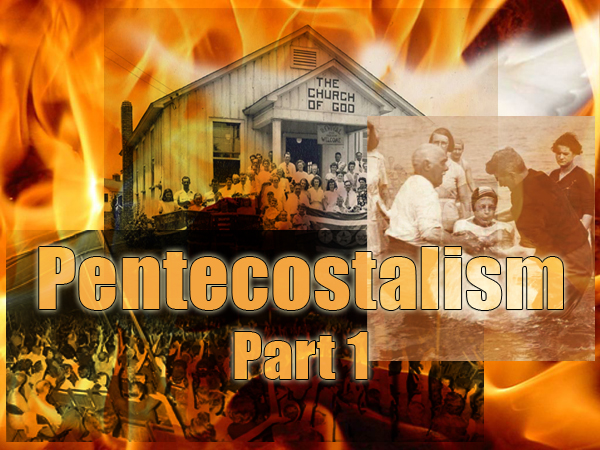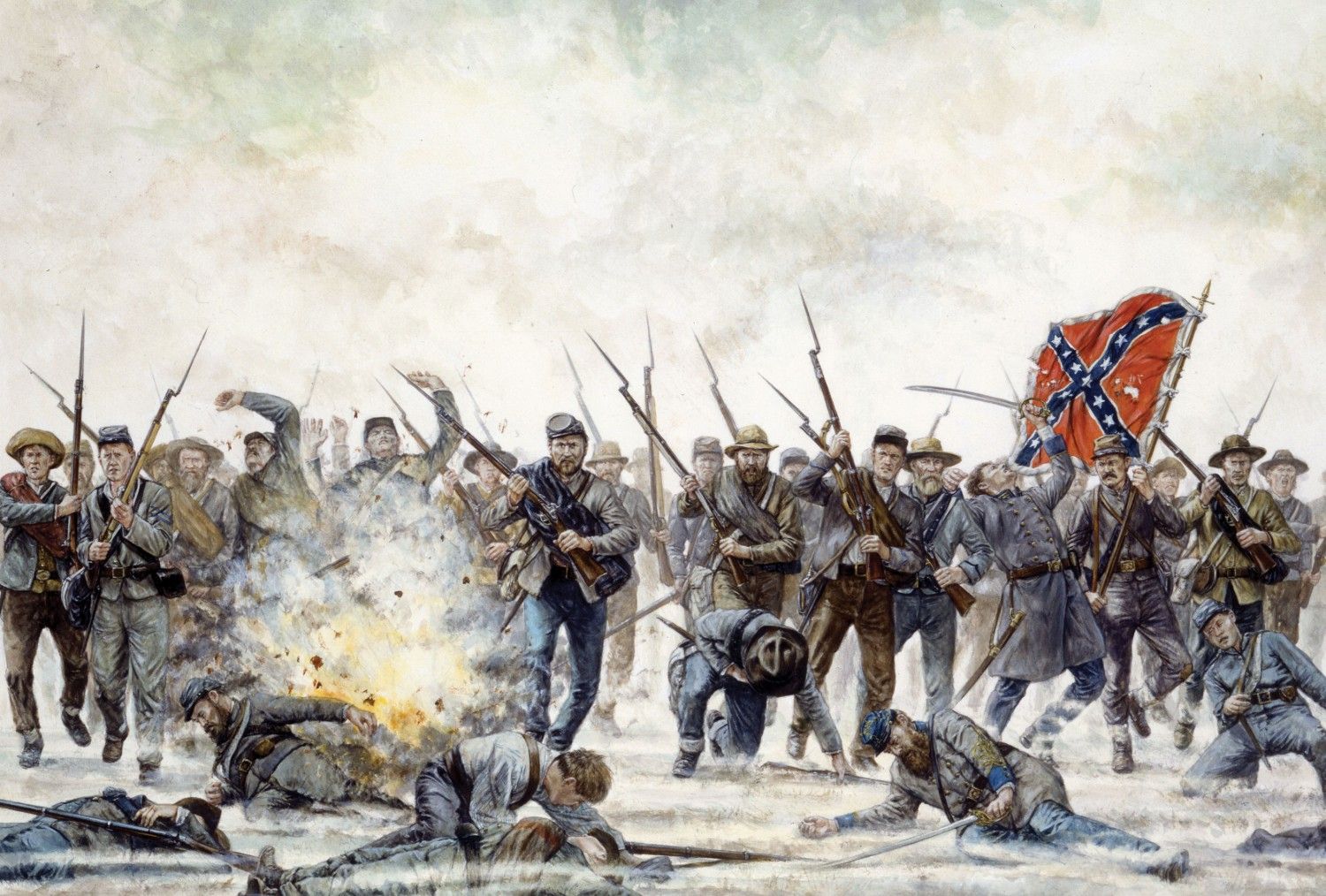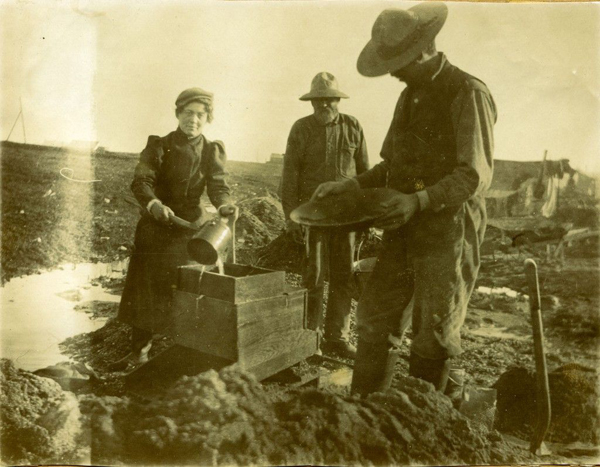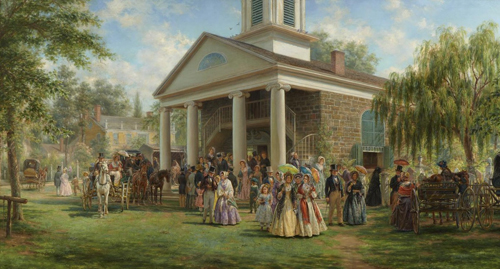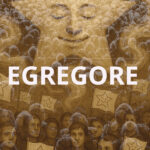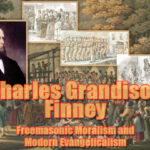Welcome back to part 11(!) of my Revival series. This one has taken me a while. I’ll be breaking up the massive subject of Pentecostalism into a couple parts again. In part one, we’ll create a backdrop with some history and the basic teachings that led to the movement that has so greatly influenced Christianity. In parts two and three, we’ll be looking at the Social Justice Movement / The Social Gospel, the rise in spiritism in the 19th century, and finally, the founders Pentecostalism.
Let’s start with some review
The Asbury “revival” earlier this year piqued my interest in what role the “Great American Revivals” had played in convoluting and diluting the gospel of Jesus Christ into the ecumenical mess of doctrine we have today. The quest was on, and my suspicions were confirmed with the careful examination of each and every one of these scripture-twisting “pillars” of Christendom. It’s amazed me how easy it was to find this information that so clearly shows how Protestants have been lured back to Roman Catholic (RCC) Piety and Mysticism; aka Mystery School teaching, all in Jesus’ holy name. In part 11 we’ll be looking into the Third Great Awakening and Pentecostalism. But first, here’s a quick review.
I’ve been covering how he Revivalists brought (in no certain order):
- Pietism
- Mysticism
- A “Second Blessing”
- Perfectionism
- Millennialism
- Social Reform
– to newly reformed Christianity.
- Pietist, Perfectionist Christian “pillar” of theology Jonathan Edwards (1703-1758) “Enlightened” people with the knowledge of their wretchedness before an “angry God.” 🤨 Edwards laid the groundwork for the antislavery movement, but he was a slave owner..

- George Whitefield (1714-1770) encouraged people toward evangelizing, yet his Boys Home (modelled after Halle Boys Home) and “Holy Club” membership speak to a hidden side of the man. Popularly known as a proponent of Social Reform, Whitefield was a plantation owner and his Boys Home was built by slaves.
- Social Reformer, religious leader of the Moravian “Christian” sex cult* (also), Count Zinzendorf (1727-1752) hosted the “Love Feasts” that Pietist/Perfectionist/Holiness teacher John Wesley was known to attend.
- Fast forward 100 years to the ministry (1825-1835) of Perfectionist, Abolitionist and Social Reformer Charles Finney (1792-1875), who rebranded Luciferian, Freemasonic Moralism as Christianity.
- Meanwhile in Scotland, Finney contemporary Edward Irving (1792-1834), (who, interestingly enough, was devoted to mathematical and physical science), was spreading Francisco Ribera’s (1537-1591) / Manuel Lacunza’s Futurism-aka-Millennarianism (with the addition of a “secret rapture of the church”).
- Irving’s charismatic eschatology taught of an end-time outpouring of the Spirit, accompanied by a restoration to the church of ‘sign gifts’ such as tongues and healing. (Source)
- Irving was later excommunicated for heresy…
- … which may explain the reluctance to connect Irving with Anglo-Irish John Nelson Darby (1800-1882), who added a racist element to his new eschatology (Dispensationalism) which is as important to the satanic world controllers as the farcical rotundity of the earth and Darwin’s theory of spontaneous Evolution – both popularized around the same time.
- Cyrus Scofield (1843-1921) later cemented Darby’s racist doctrine in the linear notes of his new Bible.
With the exception of Scofield who came later, all the above were part of the First and Second “Awakenings.”
Together, these men made great progress in splintering the Reformation and bringing Protestants back under “Mother” Rome, a goal clearly stated in the Jesuit Oath (1843).
The Civil War (1861-1865) fell on the heels of the Second “Awakening,” further priming Protestantism for the Socio-Mystical Pentecostal Movement.
Context is King! Let’s Look at Some History!
Once upon a time around 1848–1855, the discovery of gold in California and the hopes of free land drew settlers westward onto the great frontier.
The great American frontier was peppered with churches, but only about fifteen percent of the population attended church because there were less than two people per square mile on the frontier where most of the “unchurched” people lived.
Regardless of church attendance or membership, settlers still identified with Christianity. This was largely due to the Methodists and Baptists who used revivals to spread Christianity onto the frontiers. Nearly every home had a family Bible, which was usually their only book and it doubled as the children’s reader.
By the time of the Civil War, Wesley’s Methodism became the largest denomination in the U.S.
Here are some statistics of church membership in America in 1830. But because of fraternity-like requirements for membership, only about half of the people who attended church were actually church members, so you can double these numbers:
- Roman Catholics……….500,000
- Methodists……………500,000
- Baptists……………..350,000
- Presbyterians…………200,000
- Congregational………..125,000
- Lutheran……………..100,000
- Episcopalian…………. 50,000
The rise in Methodism led to the creation of the Restoration cults like the Church of Christ, Jehovah’s Witnesses, Seventh Day Adventism and Mormonism. I won’t go into that, but here’s a video if you’re interested. But Revivalism continued to be a major force after the Second “Great Awakening” ended.
As we might expect, religion in the Eastern part of the country was formal and cultured…
…while in the west it tended to be more rugged and individual.

Yep, those were the days of the wild west.
Enter Pentecostalism
“Jesuit spirituality and ethics are a very effective combination of MYSTICAL techniques and authoritarian propositions.” – Jamesjpn.net
“Mystical techniques with authoritarian propositions” is also an accurate description of Pentecostalism, which should betray its RCC origins.
Wikipedia offers this concise summary of Pentecostalism.
“Holiness Pentecostalism emerged in the early 20th century among radical adherents of the Wesleyan-Holiness movement, who were energized by Christian revivalism and expectation for the imminent Second Coming of Christ. Believing that they were living in the end times, they expected God to spiritually renew the Christian Church, and bring to pass the restoration of spiritual gifts and the evangelization of the world. In 1900, Charles Parham, an American evangelist and faith healer, began teaching that speaking in tongues was the Bible evidence of Spirit baptism.” Wikipedia
Pentecostalism and the ensuing Charismatic Movement have had such a great influence on Protestantism, that almost all denominations today are affected by its erroneous doctrines to some degree. Let’s look at a few of them.
Perfectionism
John Wesley is held as the spiritual and intellectual father of the modern Holiness and Pentecostal movements because of his doctrine of sinless perfectionism.
“Pentecostalism has its roots in the eighteenth-century Wesleyan doctrine of ‘entire sanctification’, which taught that sanctification involves a ‘second blessing’ as an experience of the Spirit distinct from conversion.” – Talking Pentecostalism
Wesley was not the only one who taught Perfectionism. We’ve covered how the same teaching was brought by the American evangelist Charles Finney in the eighteenth century. According to Finney,
“After a true experience of conversion a person could achieve the coveted state of Christian perfection or sanctification simply by exercising free will and cultivating ‘right intentions.’ Sin and holiness … could not exist in the same person.” – pcra.org
In fact, some version of perfectionism and “second blessing“ or experience were held in common by all the revivalists.
Second Blessing
In Pentecostalism, this “second blessing” was said to be evidenced by the believer speaking in unknown languages, or tongues,
“The origin of Pentecostalism can be understood against the backdrop of a revival of tongues-speaking in Topeka, 1901, after which Charles Parham formulated the doctrine of ‘initial evidence’: that tongues-speaking is the initial evidence of Spirit baptism, which he understood to be a separate work of the Spirit to conversion and sanctification.” – Talking Pentecostalism
 Health and Healing
Health and Healing
Pentecostalism popularized a doctrine of salvation that included physical health and healing as an essential part of the believer’s conversion and deliverance, so by the 1940s the central focus of revival meetings was the “moment of miracle.”
Now, God definitely has the power to heal, as I can personally testify to, but Pentecostalism places healing on man’s shoulders, taking it to a carnal level. So, rather than trusting God to heal in accordance with His perfect will, in His time, for His glory, Pentecostalism says “if you are sick, it’s because you lack faith.” or, “If you are sick, it’s because there is sin in your life.”
The Aspirations of an Earthly Reign (Millennialism)
I want to take some time on this, as it’s behind Social Justice and so much of the carnal focus we see in the church today, especially in light of current events in Israel.
“Satan will appeal to humanity in the flesh and try to imitate the one [spiritual] holy nation in Christ by also bringing in a new order of a one world government.” – Peter Cohen, New Humanity Project (thehumanityproject.org is no longer online)
In chapter 1 of the book of Acts we read of the apostles asking Jesus about the restoration of the kingdom to the Jews.
When they therefore were come together, they asked of him, saying, Lord, wilt thou at this time restore again the kingdom to Israel?
And he said unto them, It is not for you to know the times or the seasons, which the Father hath put in his own power.
But ye shall receive power, after that the Holy Ghost is come upon you: and ye shall be witnesses unto me both in Jerusalem, and in all Judaea, and in Samaria, and unto the uttermost part of the earth. (Acts 1:6-8)
I came upon these helpful insights on the above passage in Albert Barnes’ (1798-1870) Notes on the Bible:
“The apostles had entertained the common opinions of the Jews about the temporal dominion of the Messiah. They expected that he would reign as a prince and conqueror, and would free them from the bondage of the Romans. Many instances where this expectation is referred to occur in the gospels, notwithstanding all the efforts which the Lord Jesus made to explain to them the true nature of his kingdom. This expectation was checked, and almost destroyed by his death Luke 24:21, and it is clear that his death was the only means which could effectually change their opinions on this subject. Even his own instructions would not do it; and nothing but his being taken from them could direct their minds effectually to the true nature of his kingdom.
Yet, though his death checked their expectations, and appeared to thwart their plans, his return to life excited them again. They beheld him with them; they were assured that it was the same Saviour; they saw now that his enemies had no power over him; they could not doubt that a being who could rise from the dead could easily accomplish all his plans. And as they did not doubt now that he would restore the kingdom to Israel, they asked whether he would do it at that time?
They did not ask whether he would do it at all, or whether they had correct views of his kingdom; but, taking that for granted, they asked him whether that was the time in which he would do it. The emphasis of the inquiry lies in the expression, “at this time,” and hence, the answer of the Saviour refers solely to the point of their inquiry, and not to the correctness or incorrectness of their opinions. From these expectations of the apostles we may learn:
(1) That there is nothing so difficult to be removed from the mind as prejudice in favor of erroneous opinions.
(2) that such prejudice will survive the plainest proofs to the contrary.
(3) that it will often manifest itself even after all proper means have been taken to subdue it. Erroneous opinions thus maintain a secret ascendency in a man’s mind, and are revived by the slightest circumstances, even long after it was supposed that they were overcome, and in the face of the plainest proofs of reason or of Scripture…
Judea was formerly governed by its own kings and laws; now, it was subject to the Romans. This bondage was grievous, and the nation sighed for deliverance. The inquiry of the apostles evidently was, whether he would now free them from the bondage of the Romans, and restore them to their former state of freedom and prosperity, as in the times of David and Solomon. See Isaiah 1:26. The word “restore” also may include more than a reducing it to its former state. It may mean, wilt thou now bestow the kingdom and dominion to Israel, according to the prediction in Daniel 7:27?
The kingdom – The dominion; the empire; the reign. The expectation was that the Messiah the king of Israel would reign over people, and that thus the nation of the Jews would extend their empire over all the earth.
To Israel – To the Jews, and particularly to the Jewish followers of the Messiah. Lightfoot thinks that this question was asked in indignation against the Jews. “Wilt thou confer dominion on a nation which has just put thee to death?” But the answer of the Saviour shows that this was not the design of the question.” – Barnes (bold added)
God saves individual believers, not denominations, and it must be said that God, in His sovereignty and grace has used Pentecostalism to reach countless souls for Christ. The gospel that Pentecostalism spread was unfortunately infected with the pagan virus of works and mysticism, its crowning achievement arguably being the near-ubiquitous spread of the Mystery-School teaching of an earthly kingdom reign of Christ. In fact, the sum of the revivals set the stage for the occult ideal of an Atlantean utopian society in Christian form, and Pentecostalism brought shape to this grand illusion.
The carnal / pagan teaching should have been stopped dead in its tracks, and in fact, it was strongly opposed at the time. But recorded history and seminary leaders have allowed the teachings of the revivalists to whittle away at sound doctrine.
There was a lot more going on in the “New Atlantis” both before and after its establishment as a “sovereign nation” than the dry list of battles and dates we’re forced to memorize in school. In reality, the new nation and newly reformed Christianity were used as part of a massive effort to distort God’s Word and accomplish the enemy’s final goal, or Freemasonic “Great Work” of removing faith in God and enthroning the fallen one (in the form of faithless man worshiping man as his own “god.” (Gen 3:5)
OK, now hold onto your hats…
British Israel
We’ve been hearing a lot of “I stand with Israel!” And “God blesses those who bless Israel” this week; sentiments that support an unconditional allegiance to bloodline Israel and the Rothschilds-created nation; sentiments that come from a misinterpretation of God’s promise to Abraham.
Now the LORD said to Abram, “Go from your country and your kindred and your father’s house to the land that I will show you. And I will make of you a great nation, and I will bless you and make your name great, so that you will be a blessing. I will bless those who bless you, and him who dishonors you I will curse, and in you all the families of the earth shall be blessed.” (Gen 12:1-3)
And again,
And the Lord appeared unto [Isaac], and said, Go not down into Egypt; dwell in the land which I shall tell thee of:
Sojourn in this land, and I will be with thee, and will bless thee; for unto thee, and unto thy seed, I will give all these countries, and I will perform the oath which I sware unto Abraham thy father;
And I will make thy seed to multiply as the stars of heaven, and will give unto thy seed all these countries; and in thy seed shall all the nations of the earth be blessed; – Gen 26:2-4
What gets me is that Paul dispels this in Galatians.
Christ redeemed us from the curse of the law by becoming a curse for us, for it is written: “Cursed is everyone who is hung on a pole.” (Deut 21:23) He redeemed us in order that the blessing given to Abraham might come to the Gentiles through Christ Jesus, so that by faith we might receive the promise of the Spirit.
Brothers and sisters, let me take an example from everyday life. Just as no one can set aside or add to a human covenant that has been duly established, so it is in this case. The promises were spoken to Abraham and to his seed (Gen 26:3). Scripture does not say “and to seeds,” meaning many people, but “and to your seed,” meaning one person, who is Christ. (Gal 3:13-16)
The seed is Christ. It is through Christ that all the nations of the earth are blessed – not through bloodline Israel. Please watch the video in yesterday’s post for more on this.
Anyway, with that context, here’s a lengthy quote (apologies, but this is just a lot of information) from an article about the less-known history of Pentecostalism by American political activist Lyndon LaRouche.
The British Empire invents Pentecostalism
We shall give here the first serious historical account of the “planning and propagating.” We speak now of the high church principalities and powers who have built this new Tower of Babel, who look down with contempt upon their captive babblers, their low churchers, the herd, the worms.
It is necessary first to bring to light a myth known as British Israelism, which stands behind Pentecostalism. This is an evil piece of historical race gossip, spread into American religion, into the ranks of American populists, poisoning the minds of separatists and Armageddon terrorists.
The British monarchy and its prime ministers and Foreign Office fabricated British Israelism in the nineteenth century, from earlier versions of the story. They claimed that Queen Victoria was descended from the Biblical King David, and was thus a descendant of the Davidic family tree that produced Jesus. They taught that the tribes of Israel wandered into northern Europe; that by this supposed genealogy, the British are the real Chosen People, and the British Empire is thus God’s empire.
The modern Jews, by this British account, are not the historical Hebrews of Old Testament Israel, but rather, the British are. But, says the British Israel myth, in a leap of logic, the Jews need to be put into Palestine, to fulfill prophecy, get slaughtered in a war with the Muslims, and bring about the End Times. [Sounds like Pike’s 3 World Wars, doesn’t it?]
To provide fuel for this mythology, the royal family asked the British Grand Lodge of Freemasonry to establish the Palestine Exploration Fund. In the 1870s, they dispatched soldier-archeologists to the Holy Land, to dig up supposed religious relics that might impress the cheap fancies of the beggarly masses.
British Israelism designed its Jewish angle to be worked in many politically useful ways, along a spectrum from Nazi anti-Semitism to radical Zionism. The cynical character of this entire travesty may be seen, in the way the story was changed to suit imperial politics. During the 1870s, Germany broke from allegiance to British free trade doctrines. The London “prophets” then reconfigured ancient history. Suddenly, it wasn’t Britain and Germany, collectively the Nordic Aryans, who were the wandering Chosen People, but only Britain. Modern Germans, it had been discovered, are the ancient Assyrians!
According to Pentecostal lore, the movement began when a woman spoke in tongues in the church of Charles Fox Parham in Topeka, Kansas, in 1901. Reverend Parham spread the method until it blossomed in the famous Azusa Street, Los Angeles, revival of 1906; from there, disciples took it around the world.
During the year preceding the launch-time, Parham had caught fire with British Israelism. He had been indoctrinated into the Empire’s mystery cult by emissaries of one Frank Sandford, who ran a cult center called Shiloh, near Durham, Maine…
The explicit message of the British Israel propaganda was, Americans should give up their mistaken Revolution, and reunite with their Anglo-Saxon racial brethren in the English fatherland. The movement’s masonic Anglomania was proudly displayed. Parham’s biography, written by his daughter, includes a photo of a mystery gavel, brought back from Palestine and donated by Parham to his masonic lodge…
With British Israelism as his theory of man’s cosmic destiny, Parham began teaching Americans how to die mentally, to speak in tongues, as a religious exercise, allegedly re-creating the descent of the Holy Ghost upon Christ’s Apostles during the Jewish feast of Pentecost. He took this show on the road from Topeka, and in Houston, Texas, a black preacher named William J. Seymour, the son of a slave, became part of his audience. The catch was, that Parham, being a crazed racist, would not permit Seymour inside the lecture hall; he had to listen at the window, or in the hallway.
Much is made of Seymour’s spreading of the technique to a mostly black congregation on Azusa Street in Los Angeles, and of the fascination and novelty it held for visiting religious adventurers who took “Pentecostalism” out to the world. The movement was widely condemned by Christians as scandalous exploitation, and its historical origins faded into the mist.[!]
Frank Sandford spent ten years in jail for manslaughter, after many of his cult members died. [!]
Charles Parham’s religious vocation was destroyed when he was charged with sodomizing a young male follower in Texas; Parham went on to a new career as a stump speaker for the Ku Klux Klan. [!!] – Larouchepub.com (links added)
also.

I’ll be getting to Parham and his ilk later on. But for now, to summarize; the primary goal behind British Israelism is to claim that England and the United States have inherited the covenant promises God made to Israel. This was supported by Worldwide Church of God (WCG) founder Herbert Armstrong. The chief doctrine of the WCG maintains that the Anglo-Saxon races are the lost tribes of Israel. – Anglo-Israelism; British-Israelism; Worldwide Church of God.
The British Israel story originates with the Merovingian Frankists (again). From Barbara Aho (not an endorsement),
“The chief purveyor of British-Israelism is the Merovingian Prieuré de Sion, the central command of all secret societies, which plans to place one of their Jewish bloodline on the throne of the rebuilt Temple in Jerusalem. This positioning of a false messiah, whom the world will worship as Christ, has been carefully planned and executed over many centuries. The grand scheme of the Prieuré de Sion will culminate, according to former Grand Master, Sir Isaac Newton (1691-1727) when the secret societies ‘bring Jesus down” to earth.’ – Watch.Pairsite.com
Wait… didn’t Tex Marrs show that DNA testing of bloodline Jews living in Israel determined them to descend from Khazaria?
Yup.
That should be our first clue that none of this is from God.
For God is not a God of confusion but of peace… (1 Cor 14:33)
Catholic Futurism
I’ve both had people call Dispensationalism “Catholic Futurism” and been told that “The Roman Catholic Church condemns Futurism.”
The second person is actually right; the Roman Catholic Church officially condemns Futurism. And yet, most Catholics today hold to a Futurist / Dispensational view. How does that work? I found this helpful explanation on the website Berean Beacon:
“No Christian in the first 1500 years after Christ ever heard of Futurism or Preterism. Futurism was invented in 1585 by Francisco Ribera, a Jesuit theologian, when he published his book “In Sacrum Beati Ioannis Apostoli, & Evangelistiae Apocalyps in Commentarij” in which he theorized that the first few chapters of the book of Revelation apply to ancient Pagan Rome, and the rest of the book prophesies events in the distant future during three-and-a half literal years immediately prior to the final coming of Christ on earth. About the same time the Jesuit Roman Cardinal Robert Bellarmine (the judge/inquisitor of Galileo) supported Ribera’s thesis of Futurism in his work “Polemic Lectures Concerning the Disputed Points of the Christian Belief Against the Heretics of this Time.” These two books are the earliest I have found to articulate Futurism.
The earliest book of which I am aware that presents Preterism is “Vestigatio Arcani Sensus In Apocalypsi” (“An Investigation Into The Hidden Sense of the Apocalypse”). It was published in 1614 and was written by the Spanish Jesuit theologian Luis De Alcazar. In his book Alcazar claimed that all of Revelation applies to the era of pagan Rome and to the first six centuries of Christianity…
The [Futurist] writings of Ribera and Bellarmine contain the precedence upon which the theory of Dispensationalism is founded.”
Of course no Roman Catholic theologian, then or now, could publish a book, especially an interpretation of Scripture, without the approval of the Pope, called the “imprimatur.” The Futurist books by Ribera and Bellarmine and the Preterist book by Alacazar were, as required, approved (imprimatur) by the Pope; therefore they became tenets of the Roman Catholic faith.
The Pope, who claims to be the infallible interpreter of Scripture, endorsed two vastly different, contradictory and thus incompatible interpretations of Scripture. How could that possibly be? The answer is that both Futurism and Preterism serve the interests of the Pope. Which was the true interpretation of the Bible was not a concern. This is proven by the fact that he gave his imprimatur to BOTH interpretations, the Futurist and the Preterist. Why? Because the Pope cared about just one thing — the one thing that Futurism and Preterism have in common — defending the supremacy of the Papacy against the Biblical proofs mounted by Reformation theologians. Here is the key to understanding this: If the book of Revelation is about events during ancient Roman rule (as taught by the Jesuit Preterist Alcazar), or it is about events at the very end of time (as taught by the Jesuit Futurists Ribera and Bellarmine), then the book of Revelation cannot, as the Reformers said, teach that the whore of Babylon is Roman Catholicism, and the antichrist is the Papacy.” – BereanBeacon.org
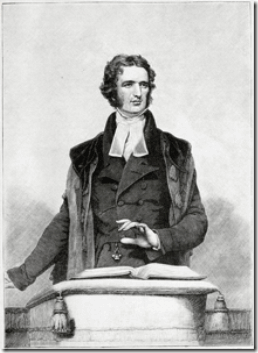
Aaand it gets even more confusing.
The RCC continues to consider ITSELF to be “Christ on Earth” while ALSO anticipating a COMING REIGN of the reembodied Christ on earth. So, their official teaching on the kingdom of Christ is:
“Now” and “Not Yet.”
That is not at all dissimilar to what most Protestants teach today, which is that: “The kingdom of God is both here and now, and in the future.”
Scripture teaches that the kingdom of Christ is spiritual and has already come (Mk 1:15, Lk 11:1, Lk 17:21); Christ currently reigns at the right hand of God (Acts 7:55); and will present the kingdom to God at the end of the age (1 Cor 15:24).
OK, I’ll leave it there for today. In the next part, we’ll talk about Spiritism and Social Reform in the late 19th century. After that, we’ll look at Parham and some of the other leaders of Pentecostalism.
In the mean time, keep your eyes on Jesus!
Revivals Pt1 – Asbury: Let’s Talk About Revivals
Revivals Pt2 – Enlightenment in the Land of the Plumed Serpent
Revivals Pt3 – Mystery Schools, The RCC and the Reformation
Revivals Pt4 – The First Great Awakening & The Enigmatic George Whitefield
Revivals Pt5 – The Brimstone and Mysticism of Jonathan Edwards
Revivals Pt 6 – John Wesley (1 of 2) – The Mystery School Dialectic and Christian Mysticism
Revivals Pt 7 – John Wesley (2 of 2) More Mystics & Papal Doctrines of Men
Revivals Pt8 – From Wesley to Finney By Way of Count Zinzendorf
Revivals Pt9 – Charles Grandison Finney, Freemasonic Moralism and Modern Evangelicalism
Revivals Pt10 – The Pagan “Virus“
Revivals Pt11 – The Third Great Awakening: Pentecostalism!
Revivals Pt12 – Pentecostalism Pt2: The Founders of Pentecostalism
Revivals Pt 13 – Social Justice Pt 1 – They Don’t Mix
Revivals Pt 14 – Social Justice Pt 2 – A City Upon A Hill
Revivals Pt 15 – Christ in You vs Millennialism
Revivals Pt 16 – The Counterfeit Enlightenment Pt 1
Revivals Pt 17 – The Counterfeit “Enlightenment” Pt2: The Dark Ages and Golden Age of Islam
Revivals Pt 18 – The Counterfeit “Enlightenment” Pt 3: Islam In the Bible?
Revivals Pt 20 – The Counterfeit “Enlightenment” Pt5: Placing Man Upon An Esoteric Sphere
Revivals Pt21 – The Counterfeit “Enlightenment” Pt6: The Image of the Beast
Revivals Pt22 – Crowning the Lord of the Earth: The Cosmati Pavement
Revivals Pt24 – The Great American Mythos Pt2: A Whole New Mystically Enlightened World
Revivals Pt25 – Creating the American Mythos – Christopher Columbus: The Great American Hero Pt1
Revivals Pt 26 – Christopher Columbus Pt 2 – The Namesake Goddess of a “Christian” Nation
Revivals Pt27 – The Witchcraft of Numbers
Revivals Conclusion Pt2 – What Is The Gospel?
Revivals Conclusion Pt3 – Subversion – From Revivalists to Modern Times





